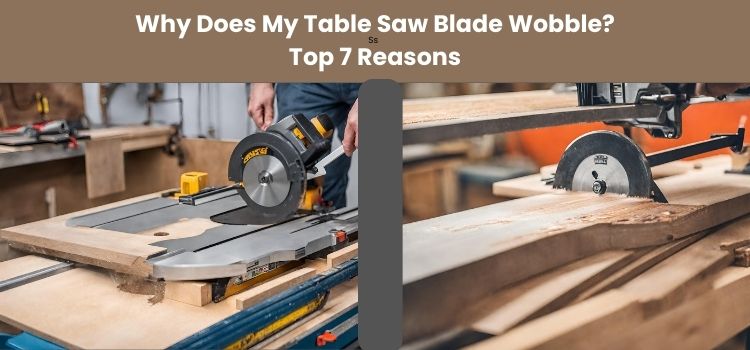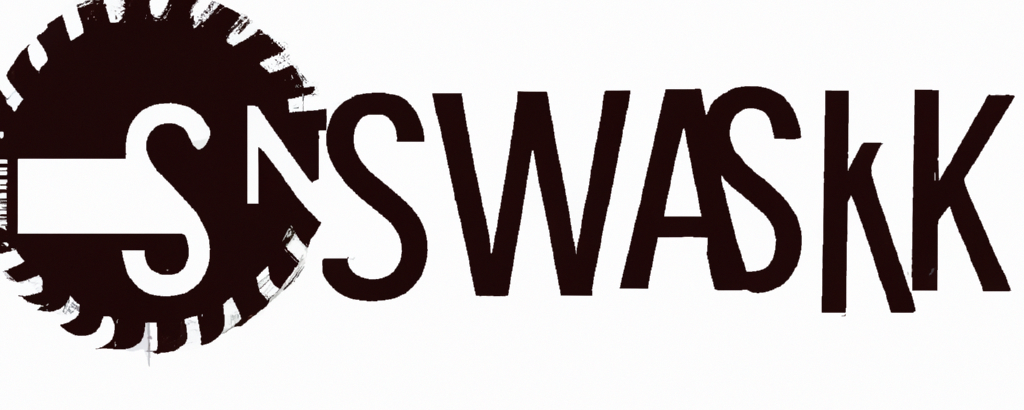Why Does My Table Saw Blade Wobble? Top 7 Reasons

A table saw stands as an emblem of accuracy in the woodworking world. It’s the go-to tool for those seeking the perfect cut. However, like any tool, it isn’t exempt from issues. One such issue that many woodworkers face is the mysterious blade wobble. But what is it, and why is it critical to address it immediately?
A table saw blade wobble occurs when the blade fails to maintain a consistent vertical alignment while rotating. Picture a spinning top as it slows down, wobbling on its axis. This wobble isn’t just an inconvenience; it can compromise the quality of your work, making your cuts less accurate. Worse, it poses a significant safety threat, as an unstable blade can lead to accidents.
Why Does My Table Saw Blade Wobble? Top 7 Reasons
A tool as intricate as a table saw has several components, any of which can be the source of the problem. To pinpoint the issue, let’s delve deeper into the usual suspects:
1. Debris between the blade and the flange:
- Something as small as a speck of dust can offset the balance of a blade. Over time, these particles accumulate, leading to noticeable wobble.
2. Bent blade:
- Accidents happen. If you’ve ever dropped your blade or subjected it to undue pressure, it might have sustained a slight bend.
3. Loose arbor nut:
- This nut holds the blade in place. A loose arbor nut translates to a wobbly blade.
4. Worn arbor bearings:
- These bearings ensure the smooth rotation of your blade. Over time, however, they’re subjected to wear and tear.
5. Arbor runout:
- Imagine a wheel that doesn’t rotate perfectly on its axis. That’s what happens when there’s arbor runout.
6. Warped blade:
- Prolonged exposure to high temperatures and stress can alter a blade’s shape.
7. Uneven blade teeth:
- Over time, teeth might wear out unevenly, or you might lose a few, which can disrupt the balance.
How to Fix Table Saw Blade Wobble? 7 Steps
Thankfully, identifying the cause means you’re on your way to a solution. Here’s a step-by-step guide:
1. Clean the blade and flange:
- Regular cleaning ensures that no foreign particles affect your blade’s balance. Use a soft brush or air blower to remove dust and debris.
2. Replace the blade:
- Consider changing the blade as a damaged blade will never deliver precision cuts. If bent or warped, invest in a quality replacement.
3. Tighten the arbor nut:
- A simple, yet often overlooked step. Ensure it’s snug but avoid over-tightening, which might lead to other issues.
4. Replace the arbor bearings:
- Bearings have a lifespan. If you notice uneven rotation or hear grinding noises, it’s time to replace them.
5. Check for arbor runout:
- Use a dial indicator for precision. If you detect any deviation, realign your saw.
6. Flatten the blade:
- For slightly warped blades, placing them on a flat surface and applying even pressure can rectify the problem.
7. Sharpen or replace the blade teeth:
- Regular sharpening ensures consistent cuts. If some teeth are damaged beyond repair, consider a replacement.
Conclusion
Your table saw is more than just a tool; it’s an investment in your craftsmanship. Regular maintenance is crucial to prolong its life and ensure every cut is a testament to your skills. Blade wobble might seem like a minor inconvenience, but it’s indicative of underlying issues.
By addressing it promptly, you not only ensure the longevity of your table saw but also create a safer working environment. Regular inspections, timely replacements, and routine cleanings will ensure your table saw remains both a trusted and safe tool in your workshop.
FAQS:
How do you fix a wobbly circular saw blade?
Check for debris and clean the blade. Ensure the arbor nut is tight. If damaged, replace the blade. Check alignment and adjust if needed.
How do I know if my table saw arbor is bent?
Observe blade wobble while operating. Use a dial indicator to measure any deviation on the arbor’s rotation. A consistent deviation indicates a bent arbor.
How do I know if my table saw bearings are bad?
Listen for grinding or squealing noises. Feel for excessive vibration or play in the blade. A rough blade rotation often indicates worn-out bearings.
